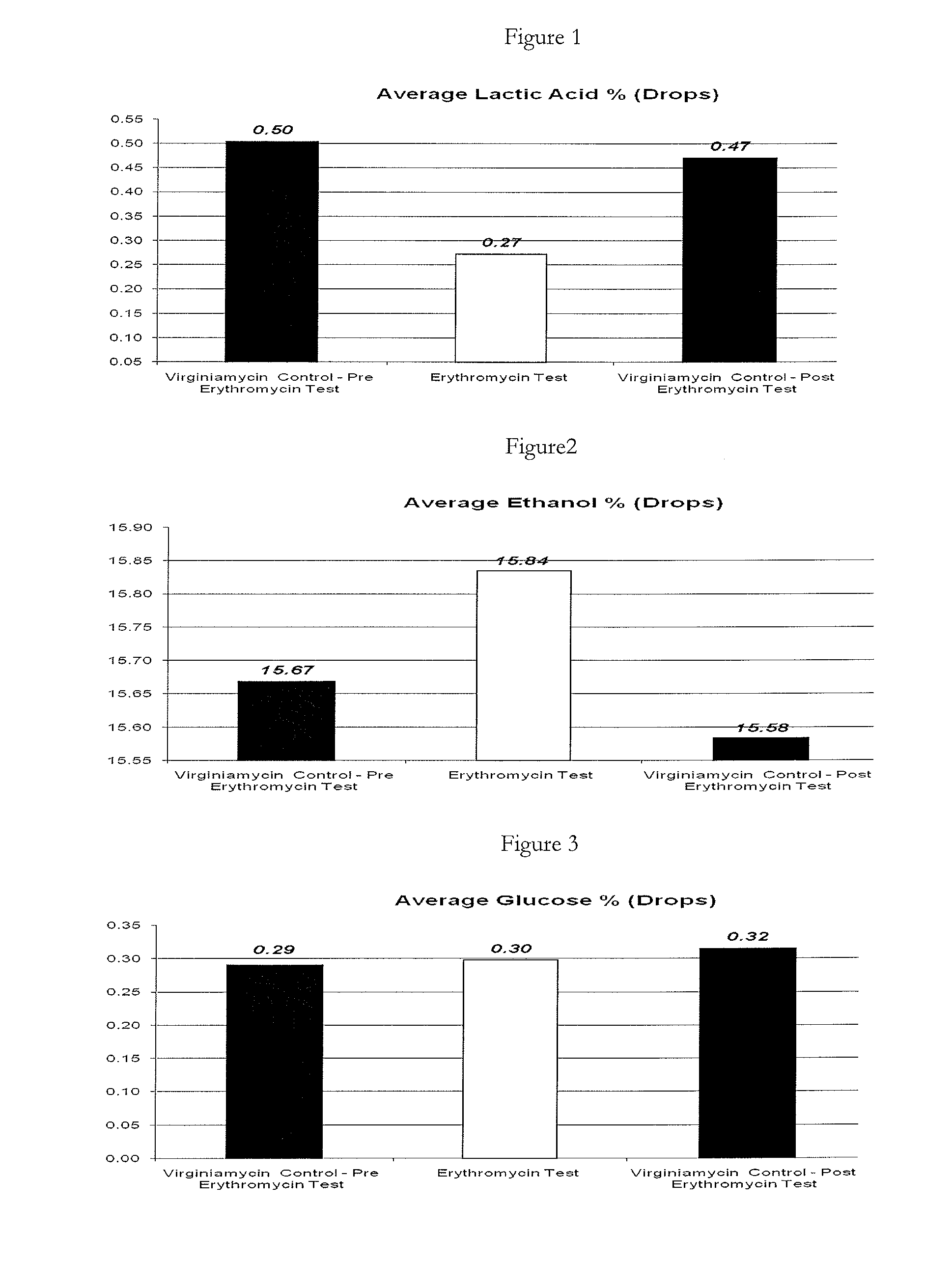Use of erythromycin as a selective antimicrobial agent in the production of alcohols
a technology of erythromycin and alcohol, which is applied in the direction of biocide, biofuels, organic chemistry, etc., can solve the problems of less carbohydrate availability for preferred yeast fermentation, less sterile conditions, and unfavorable yeast fermentation, so as to reduce or inhibit the growth of undesired bacteria, enhance efficiency and/or yield, and reduce the growth of competing bacteria
- Summary
- Abstract
- Description
- Claims
- Application Information
AI Technical Summary
Benefits of technology
Problems solved by technology
Method used
Image
Examples
Embodiment Construction
[0026]As previously stated, the production of commercial alcohol, specifically the production of fuel grade alcohol, predominantly ethanol, has increased in popularity and past and current legislation has led to a trend of investment into manufacturing capacity and developing production efficiencies.
[0027]Over the past decades Erythromycin has gained popularity as a commonly used antimicrobial for use in animal and human clinical health as referenced in U.S. Pat. Nos. 6,100,404 and 6,440,941. Unlike any previously disclosed applications of the use of Erythromycin, the present invention illustrates that Erythromycin is efficacious for use in the commercial production of alcohol. Furthermore, the present invention relates to a method of use for Erythromycin having a significantly different set of criteria for efficaciousness than that involved with human clinical health.
[0028]As employed in accordance with a preferred embodiment of the present invention, Erythromycin is effective agai...
PUM
| Property | Measurement | Unit |
|---|---|---|
| temperature | aaaaa | aaaaa |
| volume | aaaaa | aaaaa |
| time | aaaaa | aaaaa |
Abstract
Description
Claims
Application Information
 Login to View More
Login to View More - R&D
- Intellectual Property
- Life Sciences
- Materials
- Tech Scout
- Unparalleled Data Quality
- Higher Quality Content
- 60% Fewer Hallucinations
Browse by: Latest US Patents, China's latest patents, Technical Efficacy Thesaurus, Application Domain, Technology Topic, Popular Technical Reports.
© 2025 PatSnap. All rights reserved.Legal|Privacy policy|Modern Slavery Act Transparency Statement|Sitemap|About US| Contact US: help@patsnap.com



